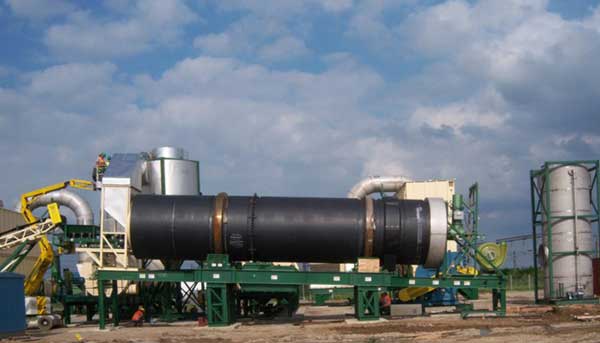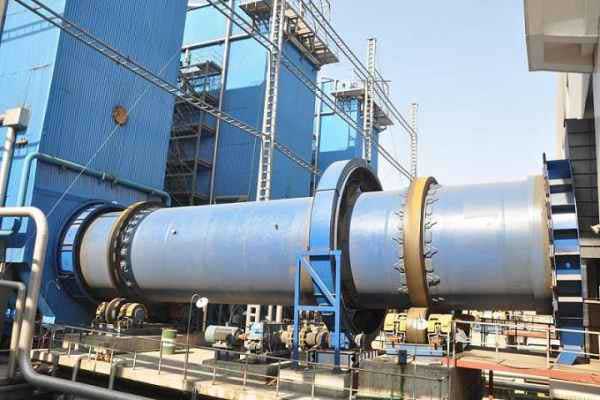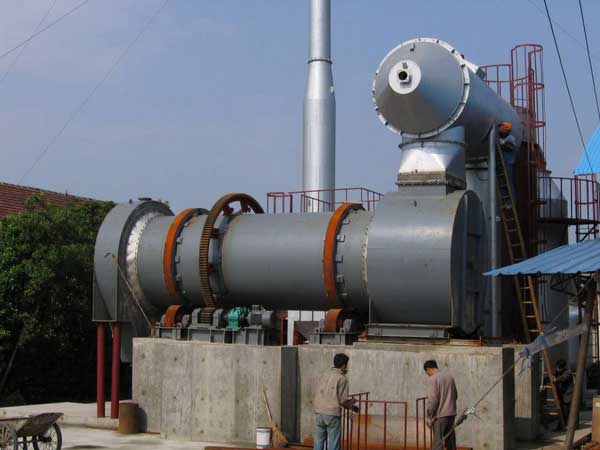Rotary incineration kiln is an incineration equipment for industrial waste treatment. It has a high market share in the field of industrial waste incineration. As a specific field for incineration of hazardous waste, rotary incineration kiln has a wide adaptability to complex industrial waste and medical waste. Stable and reliable operation, convenient management and operation, and simple equipment maintenance. To achieve harmlessness, reduction, and recycling of waste, incineration is a relatively reliable and effective method.

Outstanding advantages
Low cost: high temperature materials contact refractory materials, and it is easy to replace the furnace lining.
The transmission mechanism is simple: the transmission mechanism is in the kiln shell, and the equipment maintenance is simple.
Ensure that harmful gases are not leaked: good sealing measures and negative pressure in the furnace.
Convenient operation and maintenance: high equipment operation rate.
Strong adaptability to incineration: solid waste, liquid, colloid and gas can be incinerated at the same time.
High heat utilization rate: the incineration material is tumbling forward, and the three heat transfer methods coexist in one furnace.
Combining technology: The traditional secondary combustion chamber has been transformed into a secondary combustion furnace, which has improved the burnout rate of ash and slag, and improved the incineration efficiency of the rotary kiln. At the same time, it has comprehensive functions such as slag removal at room temperature, slag crushing, and closed air lock.

Working principle
The waste incineration rotary kiln can handle solid and liquid waste at the same time. The solid waste is sent to the rotary kiln by special conveying equipment. The liquid waste is sprayed into the feed end of the kiln body through the high-efficiency atomizing equipment. The waste is evaporated and evaporated in the rotary kiln. During the process of fire and combustion, the ash and slag are partly discharged from the bottom of the second combustion chamber. The generated flue gas enters the second combustion chamber and is mixed with the second combustion air in the second combustion chamber to achieve complete combustion of the flue gas and achieve the safety of exhaust emissions.
The three incineration methods of rotary kiln incineration are ash and slag incineration; slag incineration; and pyrolysis incineration.
1.Rotary kiln ash and residue incineration
The slag type incinerator, the temperature of the rotary kiln is controlled at 800-900, and the hazardous waste is destroyed by oxidative melting. The ash slag discharged from the kiln tail is mainly ash slag. After cooling, the ash slag is relatively loose. Because the furnace temperature is not high, Hazardous wastes are not highly corrosive and oxidative to the refractory materials of the rotary kiln. For this reason, the service life of the refractory materials is relatively long, and the phenomenon of “wall hanging” of the inner furnace body is not serious.

2.Slag type incineration of rotary kiln
The slag-type rotary kiln incinerator mainly deals with some single, highly toxic and hazardous waste, and the temperature is generally above 1500, in order to improve the destruction rate. Due to different treatment objects and complex components, the melting point of some hazardous wastes is above 1300-1400, so the temperature control of this type of incinerator is difficult and the operation requirements are high. Due to the higher temperature of the slag-type rotary kiln incinerator and the increase in auxiliary fuel consumption, the most direct consequence is that the rotary kiln refractories, heat-insulating materials, fuel consumption, mechanical losses and operating difficulties are relatively high.
3. Rotary kiln pyrolysis incineration
The temperature in the pyrolysis rotary kiln incineration kiln is controlled at 700-800. Due to the pyrolysis and gasification of hazardous waste in the rotary kiln, the combustible gas enters the second combustion chamber for combustion, which can greatly reduce the fuel consumption. In addition, due to the low temperature, the heat loss is small. The amount of flue gas is the lowest of the three treatment processes, which reduces the installed capacity and greatly reduces the operating cost. However, its disadvantages are high ash residue and incomplete ash residue incineration. At present, some key technologies have made breakthroughs. This incineration method represents the development direction of rotary kiln incineration of hazardous waste, especially for a resource-saving society.


